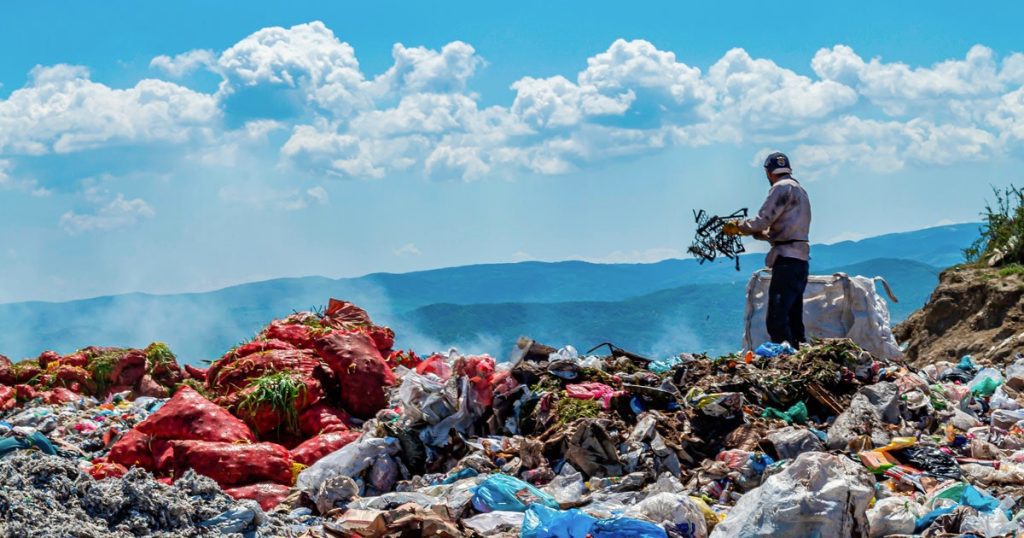Rule: Partially true.
It varies greatly in how the materials are recycled.
Elements such as aluminum and iron can be neatly sorted by their density or melting point, so nearly 100 percent can be recycled.
so it is 75 percent of aluminum ever produced is still in use. Glass also does not lose quality due to frequent recycling.
With other types of waste, “recycling” is hard to avoid, as the quality deteriorates with each recycling.
This is the case, for example, with paper: paper fibers become shorter, thinner, and less stiff after each reuse.
On average, after seven reuses, the fibers are only suitable for making cardboard.
Rule: Partially true.
The international trade in waste is a multi-billion dollar business. Waste usually travels from rich countries to poor countries, and much of the harmful or toxic waste coming from the West ends up in landfills in East Asia or Africa.
As of 2018, China will no longer accept plastic waste unless it has been sorted to at least 99.5 percent purity and is therefore suitable for recycling.
New international agreements will also make it difficult for rich countries to export waste to poor countries from 2021.
However, trade in waste – including expired vessels – remains profitable for recipient countries.
But dismantling ships can be deadly.
Ships are often disposed of in Bangladesh and India, supplying 20 and 10 percent of the steel needs of the two countries respectively.
Rule: incorrect.
Recycling of waste often pays off.
Minerals in particular are easy to sort and purify. Aluminum tops the list: Recycling requires only 5 percent of the energy needed to extract new aluminum.
The environment also benefits from recycling, according to the calculations. If the United States were to increase glass recycling from 33 to 50 percent, what would it be carbon dioxide2Emissions are like taking 300,000 petrol cars off the road.
Recycling can also aim to leave rare earths like neodymium and praseodymium in the earth for future generations. Rare earths are an important component of semiconductors, which are used in all digital technologies.
Recycling can also reduce the need for polluting or resource-hungry mining.
For example, lithium extraction for lithium-ion batteries—which are found in nearly all computers, phones, and electric cars—uses a great deal of water.
Rule: Pretty much incorrect.
Most household waste is more suitable for new products than energy production.
About 90 percent of dry waste, such as glass, metal, paper and plastic, can be recycled if properly sorted and treated.
Wet waste, such as food scraps, is suitable for energy production, such as biogas. 12 kilograms of wet waste produces energy equivalent to one liter of petroleum.
Pyrolysis can be used for almost all materials containing organic compounds – even rubber in old car tires.
During preparation, the waste is dried and crushed, and then briefly exposed to temperatures between 400 and 800 degrees Celsius.
The result is biogas, bio-oil, and a black powder called biochar, which contains more than 65 percent of carbon.
Biochar can improve farmland. The charred germs also deposit a lot of carbon dioxide2 solid that will be released into the atmosphere. About 12 percent of our annual carbon dioxide2Emissions can be neutralized with biochar.
Rule: the correct.
Plastic is one of the most difficult types of waste to sort. Therefore, only 9 percent of the total plastic ever produced is recycled.
Of the remaining 91 percent, 12 percent were incinerated, but 79 percent ended up in landfills or in nature, where they break down into smaller and smaller particles until they form microplastic particles.
The smaller the pieces, the greater the problem. They end up in animals at the bottom of the food chain.
When large animals eat, plastic accumulates – in the food we eat. In March 2022, scientists announced that they had also found microplastic particles in human lung tissue for the first time.
The problem with plastic is that there are seven main types, with different chemical compositions. Soda bottles are often made of polyethylene terephthalate and polypropylene plastic bags.
All types – and all colors – must be separated. To be able to process plastic into granules for new products.

“Thinker. Coffeeaholic. Award-winning gamer. Web trailblazer. Pop culture scholar. Beer guru. Food specialist.”







More Stories
Comet Tsuchinshan-Atlas is ready to shine this fall
Sonos isn’t bringing back its old app after all
Indiana Jones and the Great Circle is coming to PS5 in spring 2025